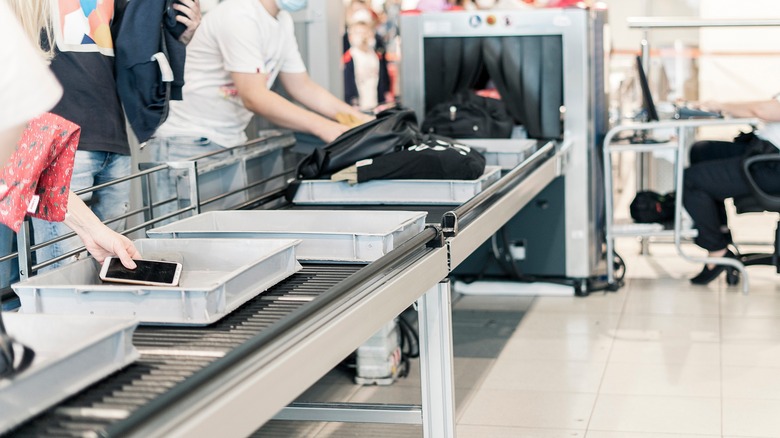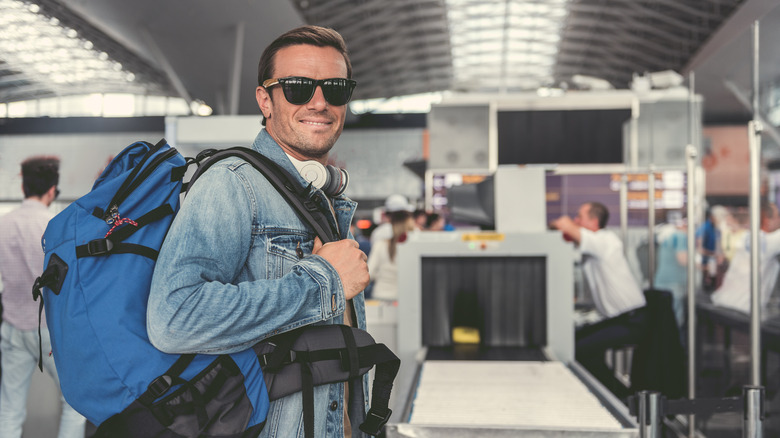The Common Item People Have On Through Security Lines That TSA Agents Hate
In the intricate dance of airport security, where every traveler is a participant and TSA agents are the choreographers, one common item disrupts the rhythm: headphones. This seemingly innocuous personal item, beloved by millions for its ability to provide private soundscapes in public spaces, has become a surprisingly contentious object at airport security checkpoints. Headphones, ranging from compact AirPods to bulky DJ-like over-ear models, are a staple for travelers, providing a much-needed sonic oasis of music, podcasts, or audiobooks. Per TSA guidelines, you can carry headphones in your carry-on and checked bags. However, having your headphones on while getting through airport security is something TSA agents hate for two reasons: communication and safety.
Former TSA agent Caleb Harmon-Marshall, in an interview with Business Insider, explains, "Never wear headphones prior to going through security ... You want to be very mindful of what's going on in your surroundings." TSA agents need to communicate quickly and clearly with passengers during the screening process. Headphones, especially noise-canceling models, can create communication barriers and a general lack of awareness, leading to misunderstandings and potential safety issues.
Although blocking out annoying noises while waiting in the security line is tempting, it's best to have the headphones turned off and removed. You don't want to miss important announcements or instructions. Yes, TSA agents can be a little intimidating (which is why we tend to tune them out). However, Harmon-Marshall advises to "stop, listen to what that officer is saying, and then proceed."
Headphone etiquette for TSA screenings
In light of these challenges, what can travelers do to ensure a smoother experience? The answer lies in awareness and preparation. Travelers should be conscious of how their personal items, like headphones, can impact the screening process. Removing headphones before reaching the X-ray conveyor belt can save time and hassle. Being attentive and responsive to TSA agents' instructions without the barrier of headphones ensures that communication remains open.
You may wonder, is passing your precious headphones through that scary X-ray box safe? Good news to all audiophiles: yes, it's absolutely safe. Nothing will happen to your headphones. Small headphones, wired or wireless, can generally remain inside your carry-on. Larger ones (bigger than a cell phone is a good rule of thumb) must be removed and put into a separate bin for screening. Headphones often contain sophisticated technology — TSA agents must remain vigilant, as any device could conceal prohibited items.
Being compliant with screening procedures makes things smoother and nicer for everyone. Although the TSA doesn't officially mandate that travelers remove their headphones during screening, it's still a good idea to do so. Having them on (or worse, refusing to take them off) might get you flagged by the TSA. Moreover, the airport security body scanners will detect any metal on your person, including your headphones, so you'll have to remove them anyway. Keep in mind that at the end of the day, the TSA, under all circumstances, will prioritize passenger safety over preferences.

